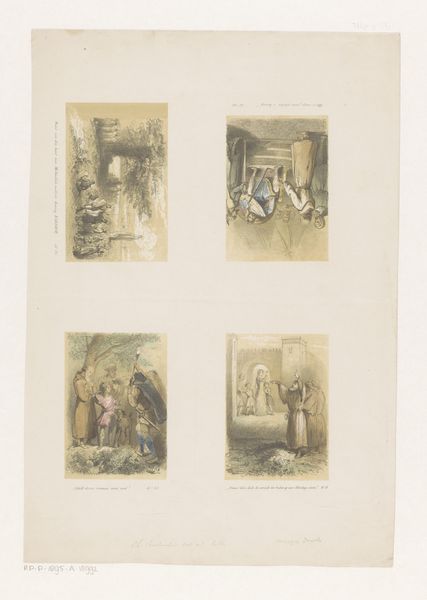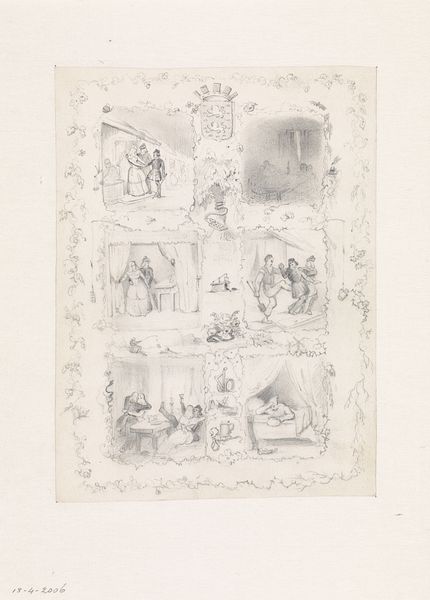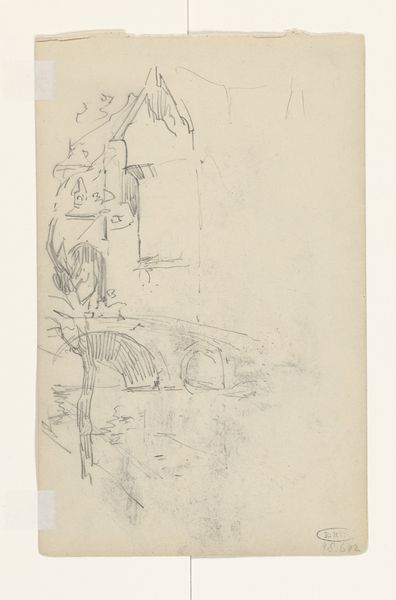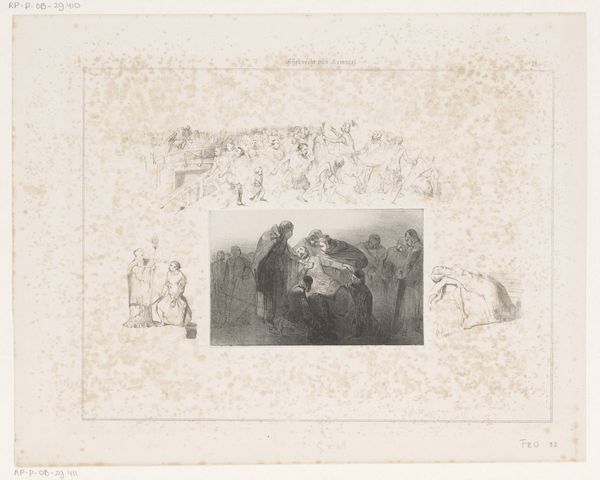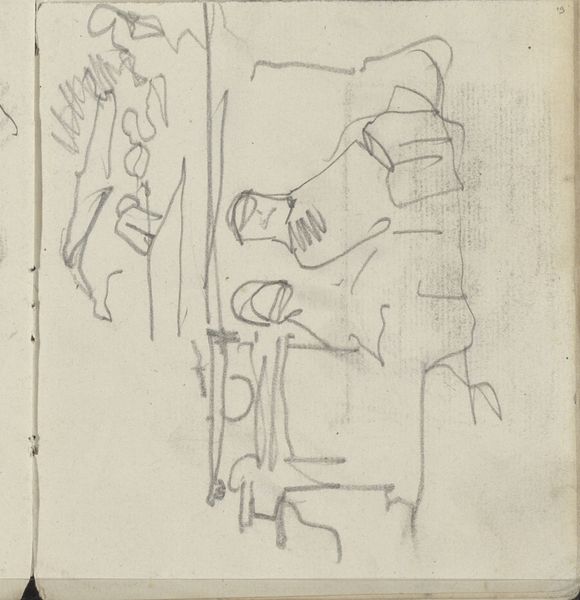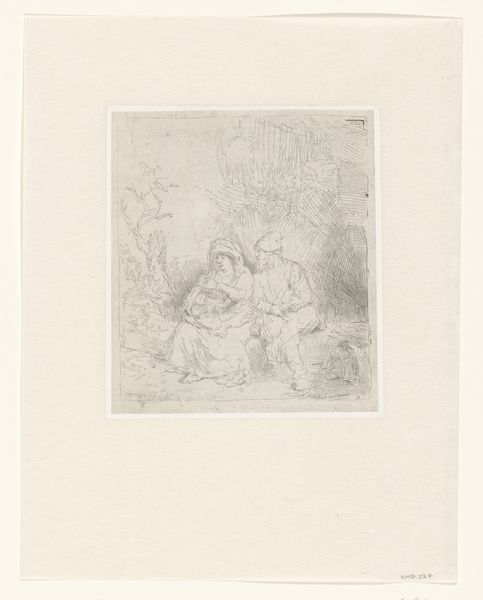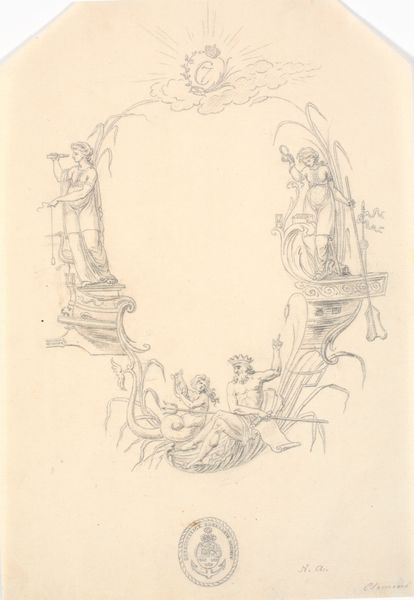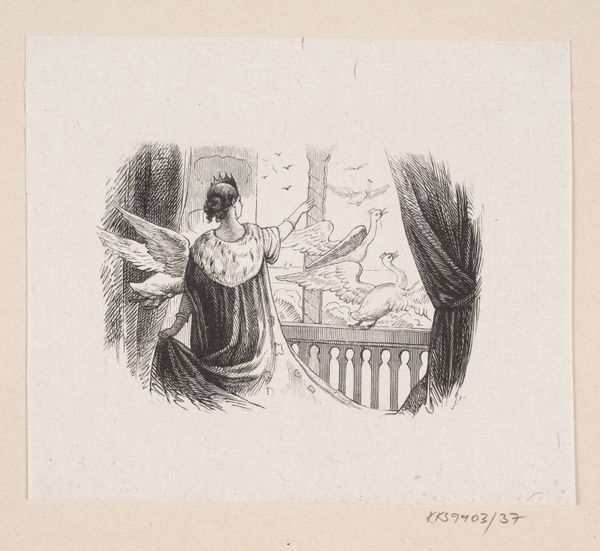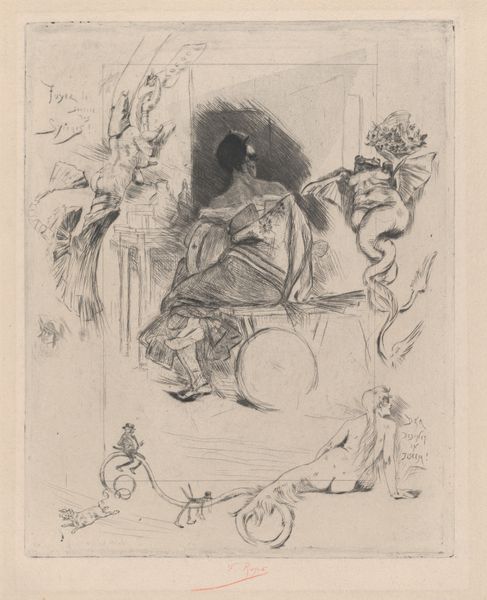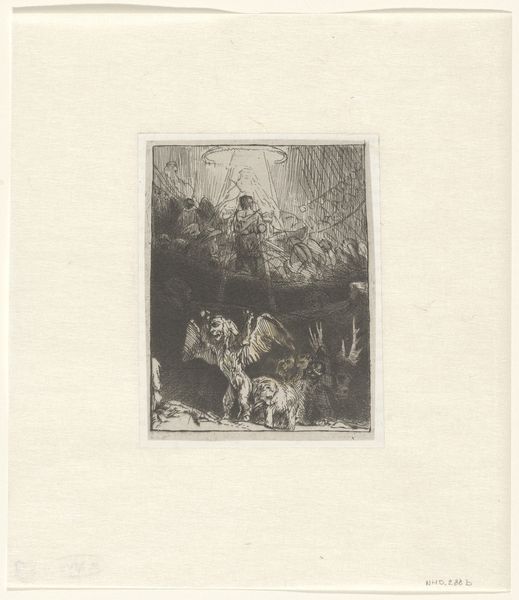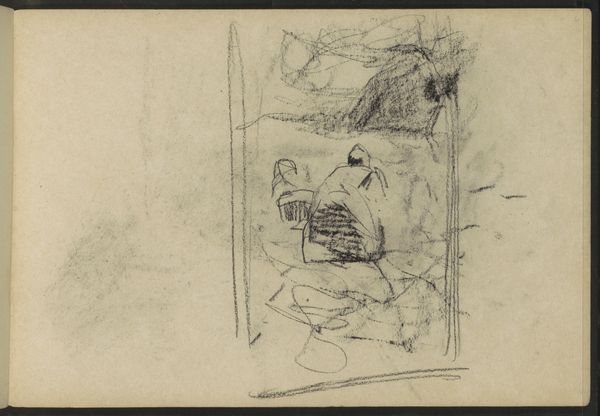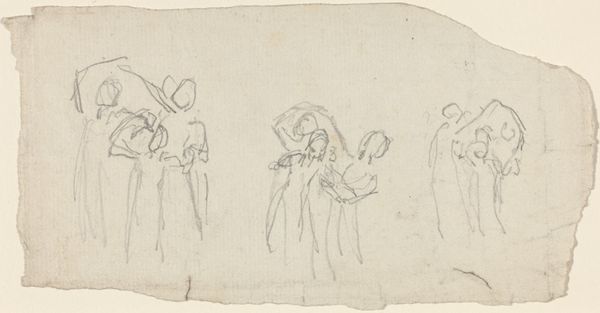
drawing, pencil
#
drawing
#
amateur sketch
#
toned paper
#
light pencil work
#
impressionism
#
pencil sketch
#
personal sketchbook
#
ink drawing experimentation
#
pencil
#
sketchbook drawing
#
pencil work
#
watercolour illustration
#
genre-painting
#
sketchbook art
#
realism
Dimensions: height 130 mm, width 164 mm
Copyright: Rijks Museum: Open Domain
Editor: This is Henri Patrice Dillon's "Three Women Viewing Prints in a Studio," dating somewhere between 1860 and 1909, rendered in pencil. I’m struck by the sketch's incompleteness; the floating frames create a very dreamlike space. What do you see in this piece? Curator: What immediately draws my attention is the stark contrast between the clearly defined figures and the amorphous background. Consider the lines of the women’s garments and their faces. Notice the relative lack of clear form in the frames depicted; how does that communicate spatial relationships to you? Editor: That's a clever point! It does create a visual push and pull. The solidity of the figures juxtaposed against the haziness of the frames... perhaps representing the solidity of artistic engagement versus the illusion of art? Curator: Precisely. Dillon orchestrates a delicate balance using a minimalist palette. It invites us to question how definition and form influence meaning. What emotional tone does the artist convey through this approach, do you think? Editor: I hadn’t considered that at first, but there is something unsettling about how little background is present. Does the absence force us to focus on the act of looking and judging art? Almost making *us* the figures within *their* artistic sphere? Curator: Exactly. The semiotic approach is powerful here because of its subtle commentary. Note also the stark differences in the shading used on the figures in the foreground versus those by the displayed art pieces. Editor: This makes me look at Dillon's piece in a new light. I hadn’t initially understood the structural relationships in terms of commentary. Thanks so much! Curator: My pleasure. I encourage you to always examine artworks not just for their beauty, but for their capacity to challenge our perceptions.
Comments
No comments
Be the first to comment and join the conversation on the ultimate creative platform.
